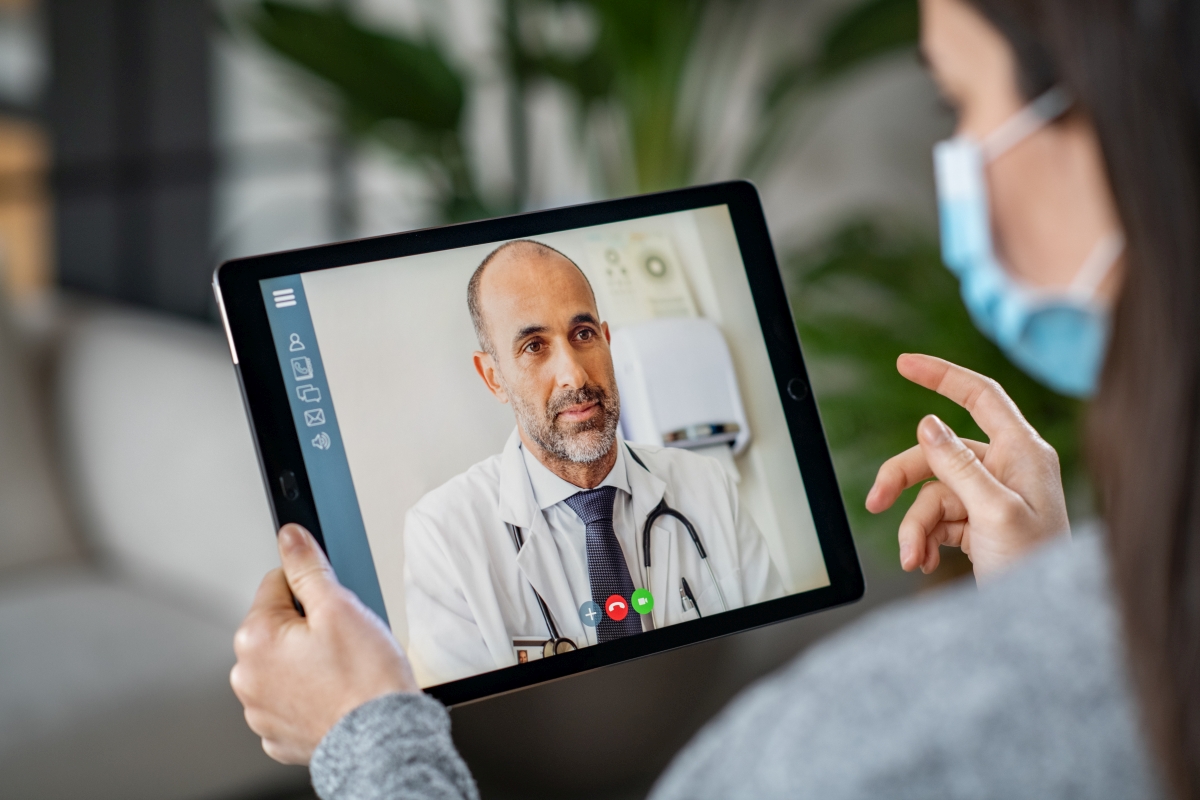Teledoctors vs Standard Healthcare: Which is Better?
Teledoctors vs Standard Healthcare: Which is Better?
Blog Article
Teledoctors: Connecting the Gap Between Patients and Healthcare Service Providers
The emergence of teledoctors represents a significant shift in the medical care landscape, using services to long-lasting availability issues dealt with by people and suppliers alike. By incorporating telemedicine right into conventional methods, healthcare systems can reach underserved and remote populations, providing vital medical examinations without the obstacles of distance and traveling.
Increase of Telemedicine

The rise of telemedicine is additionally sustained by the requirement for affordable health care. Healthcare systems internationally are under stress to lower costs while preserving quality treatment, and telemedicine provides a feasible remedy. By reducing the demand for physical gos to, telemedicine reduces overhead costs for healthcare centers and eventually lowers the monetary worry on patients.
Furthermore, the COVID-19 pandemic functioned as a driver, accelerating the fostering of telemedicine methods. Social distancing steps and the need to decrease exposure risk demanded a shift in the direction of remote consultations, motivating regulative bodies to support and adjust telehealth services. This change has not only tried and tested telemedicine's effectiveness however also its potential to progress as a staple component of modern-day health care systems.
Advantages for Clients
As telemedicine remains to improve healthcare shipment, people stand to get considerably from this transformation. Mostly, telemedicine enhances access, allowing people in remote or underserved areas to consult healthcare suppliers without the requirement for extensive travel. This is specifically useful for people with movement concerns or those living in rural areas where medical care centers could be limited. Telemedicine likewise provides clients the convenience of getting medical recommendations and therapy from the comfort of their homes, minimizing the moment and price associated with traveling to a health care center.
Moreover, telemedicine sustains connection of care by helping with normal follow-ups and tracking, which are important for managing persistent problems. Individuals can easily schedule consultations and gain access to medical care solutions outside typical office hours, suiting their busy lifestyles. This adaptability results in improved patient interaction and adherence to treatment plans, possibly resulting in better health and wellness end results.
In addition, telemedicine can help alleviate the threat of infection transmission, an issue heightened by the COVID-19 pandemic. By lessening the need for in-person sees, clients can prevent crowded waiting areas and reduce exposure to infectious ailments. Ultimately, telemedicine encourages individuals by supplying prompt, reliable, and individualized healthcare services.
Benefits for Providers
For medical care service providers, telemedicine offers significant benefits that enhance the performance and reach of their technique. By leveraging electronic innovation, carriers can extend their services to a wider group, consisting of those in underserved or remote locations. This not only alleviates geographical obstacles yet additionally maximizes individual retention and purchase by making medical care much more available.
With telemedicine, the need for physical room diminishes, allowing carriers to save on genuine estate and functional costs. This flexibility can lead to enhanced person assessments per day, thus increasing earnings possibility.
Telemedicine likewise fosters a much more joint environment for medical care companies. teledoctors. It allows seamless sharing of individual details amongst experts, boosting analysis accuracy and therapy results. Additionally, digital platforms can incorporate with digital health and wellness documents (EHRs), boosting data precision and enhancing administrative jobs
Additionally, telemedicine improves patient contentment, which is vital for provider reputation and success. By using timely and hassle-free care, providers can improve person loyalty and involvement, additionally reinforcing the provider-patient connection.
Overcoming Difficulties
While telemedicine uses countless advantages for healthcare carriers, it also offers obstacles that need cautious consideration. One substantial challenge is making sure data personal privacy and safety. As patient information is sent digitally, the danger of information violations increases, necessitating durable cybersecurity actions. Doctor have to comply with rigid guidelines like HIPAA to protect delicate details, thus needing financial investment in secure platforms and ongoing team training.
Another challenge is the digital divide, which can prevent accessibility to telemedicine solutions. Not all people have equal accessibility to the needed innovation or web connectivity, particularly those in underserved or rural areas. This difference can intensify existing medical care inequalities, making it essential for service providers to check out alternative remedies, such as Resources collaborations with community companies, to connect this void.
Furthermore, there are restrictions in performing health examinations remotely. Specific conditions require in-person assessment, highlighting the requirement for a crossbreed version that integrates telemedicine with standard gos to. Suppliers must browse these obstacles by establishing methods to recognize when telemedicine is ideal and ensuring seamless changes between in-person and virtual care.
Future of Medical Care
The future of healthcare is poised for a transformative evolution, driven by the quick integration of innovation and development. Central to this change is the rise of telemedicine, which is redefining how medical solutions are accessed and provided. With developments in electronic communication, telehealth platforms are coming to be more innovative, providing real-time consultations, remote client tracking, and customized treatment strategies. This not only boosts client benefit however likewise broadens access to health care, especially in underserved and country locations.
Expert system visite site (AI) and equipment learning are likewise readied to play critical functions. These innovations can assess vast amounts of data, offering predictive understandings right into individual health and wellness, enhancing diagnostic accuracy, and personalizing treatment strategies. AI-driven devices can increase doctor' capabilities, causing even more informed decision-making and my sources better individual outcomes.
Additionally, wearable innovation and Internet of Clinical Things (IoMT) tools are transforming client involvement and proactive health and wellness management. These tools allow continual wellness tracking, permitting for very early detection of possible issues and timely interventions.
As these technologies proceed to advance, they guarantee to develop an extra efficient, available, and patient-centric healthcare system, ultimately bridging the void between people and healthcare companies. - teledoctors
Verdict
Medical care companies benefit from much more reliable time monitoring and improved collaboration chances. Regardless of difficulties such as technological obstacles and regulatory problems, the future of medical care appears increasingly inclusive and efficient due to the integration of telemedicine into traditional care models.

As telemedicine proceeds to improve medical care distribution, clients stand to get significantly from this transformation. Mainly, telemedicine improves access, enabling clients in underserved or remote locations to get in touch with medical care companies without the requirement for comprehensive travel. Telemedicine also offers people the comfort of getting medical guidance and therapy from the comfort of their homes, reducing the time and price connected with traveling to a healthcare center.
Inevitably, telemedicine empowers people by supplying timely, effective, and personalized medical care solutions.
Report this page